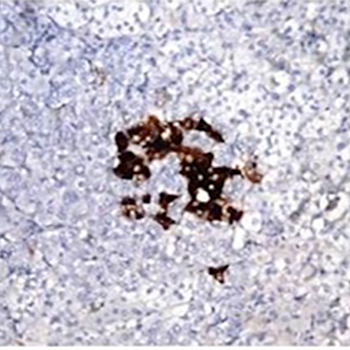Keywords
Adrenal Incidentaloma, Subclinical Hypercortisolism, Pheochromocytoma, adrenal hyperplasia
Abstract
Introduction: Pheochromocytoma (PHEO) is a rare catecholamine-producing tumour arising from chromaffin cells in the sympatho-adrenal system, and can present as asymptomatic adrenal incidentaloma (AI).
Patient: We describe the case of a 61-year-old woman with a right adrenal mass incidentally discovered, who was biochemically characterized with subclinical hypercortisolism (SH). The patient was scheduled for adrenalectomy because of increasing seizure of the right adrenal gland with a haemorrhagic and focal pseudocystic appearance macroscopically, incidental histological and immunohistochemical PHEO, and micronodular cortico-adrenal hyperplasia.
Discussion: This report describes a rare case of incidental non-functioning PHEO coexisting with corticomedullary hyperplasia and SH.
References

Views: 1123
HTML downloads: 171
PDF downloads: 458
FIgure 1 downloads: 0
Figure 2 downloads: 0
Figure 3 downloads: 0
Table 1 downloads: 0
updated manuscript downloads: 0
Published:
2017-10-06
Issue:
Vol. 4 No. 10
(view)










